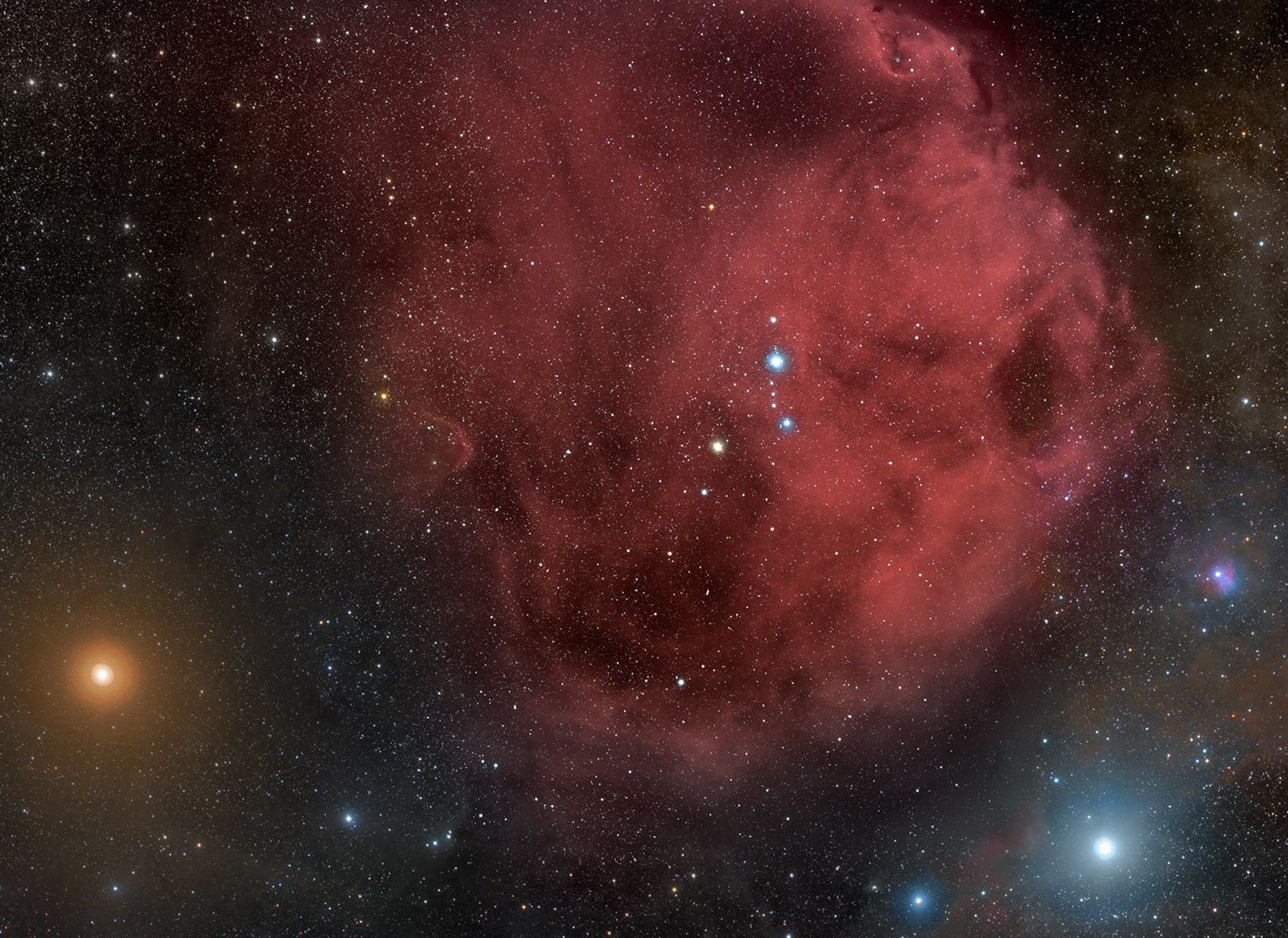Phi2 Orionis on:
[Wikipedia]
[Google]
[Amazon]
 Phi2 Orionis is a
Phi2 Orionis is a
 Phi2 Orionis is a
Phi2 Orionis is a star
A star is a luminous spheroid of plasma (physics), plasma held together by Self-gravitation, self-gravity. The List of nearest stars and brown dwarfs, nearest star to Earth is the Sun. Many other stars are visible to the naked eye at night sk ...
in the constellation
A constellation is an area on the celestial sphere in which a group of visible stars forms Asterism (astronomy), a perceived pattern or outline, typically representing an animal, mythological subject, or inanimate object.
The first constellati ...
Orion, where it forms a small triangle on the celestial sphere
In astronomy and navigation, the celestial sphere is an abstract sphere that has an arbitrarily large radius and is concentric to Earth. All objects in the sky can be conceived as being projected upon the inner surface of the celestial sphere, ...
with the nearby Meissa
Meissa , designated Lambda Orionis (λ Orionis, abbreviated Lambda Ori, λ Ori) is a star in the constellation of Orion. It is a multiple star approximately away with a combined apparent magnitude of 3.33. The main components are a ...
and Phi1 Orionis. This star is visible to the naked eye with an apparent visual magnitude
Apparent magnitude () is a measure of the brightness of a star, astronomical object or other celestial objects like artificial satellites. Its value depends on its intrinsic luminosity, its distance, and any extinction of the object's light ca ...
of 4.081. Based upon an annual parallax shift of 28.67 mas, it is located around 114 light-year
A light-year, alternatively spelled light year (ly or lyr), is a unit of length used to express astronomical distances and is equal to exactly , which is approximately 9.46 trillion km or 5.88 trillion mi. As defined by the International Astr ...
s from the Sun
The Sun is the star at the centre of the Solar System. It is a massive, nearly perfect sphere of hot plasma, heated to incandescence by nuclear fusion reactions in its core, radiating the energy from its surface mainly as visible light a ...
.
This is an evolved G-type star
In astronomy, stellar classification is the classification of stars based on their spectral characteristics. Electromagnetic radiation from the star is analyzed by splitting it with a prism or diffraction grating into a spectrum exhibiting the ...
of stellar classification
In astronomy, stellar classification is the classification of stars based on their stellar spectrum, spectral characteristics. Electromagnetic radiation from the star is analyzed by splitting it with a Prism (optics), prism or diffraction gratin ...
G8 III-IV, which means that it is in an evolutionary stage between a subgiant
A subgiant is a star that is brighter than a normal main-sequence star of the same spectral class, but not as bright as giant stars. The term subgiant is applied both to a particular spectral luminosity class and to a stage in the evolution ...
(IV) and a giant star
A giant star has a substantially larger radius and luminosity than a main-sequence (or ''dwarf'') star of the same surface temperature. They lie above the main sequence (luminosity class V in the Yerkes spectral classification) on the Hertzsp ...
(III). It is estimated to be 6.9 billion years old, has 1.07 times the mass of the Sun
The solar mass () is a frequently used unit of mass in astronomy, equal to approximately . It is approximately equal to the mass of the Sun. It is often used to indicate the masses of other stars, as well as stellar clusters, nebulae, galaxies a ...
, but has expanded to 8 times the Sun's radius
Solar radius is a unit of distance used to express the size of objects in astronomy relative to the Sun. The solar radius is usually defined as the radius to the layer in the Sun's photosphere where the optical depth equals 2/3:
1\,R_ = 6.957\ti ...
. The star shines with 30 times the solar luminosity
The solar luminosity () is a unit of radiant flux (Power (physics), power emitted in the form of photons) conventionally used by astronomers to measure the luminosity of stars, galaxy, galaxies and other celestial objects in terms of the output of ...
from its outer atmosphere at an effective temperature
The effective temperature of a body such as a star or planet is the temperature of a black body that would emit the same total amount of electromagnetic radiation. Effective temperature is often used as an estimate of a body's surface temperature ...
of .
References
{{DEFAULTSORT:Phi2 Orionis G-type giants Orionis, Phi Orion (constellation) Durchmusterung objects Orionis, 40 037160 0263661907
Events
January
* January 14 – 1907 Kingston earthquake: A 6.5 Moment magnitude scale, Mw earthquake in Kingston, Jamaica, kills between 800 and 1,000.
February
* February 9 – The "Mud March (suffragists), Mud March", the ...
G-type subgiants